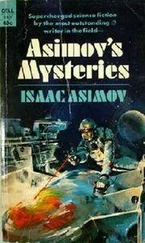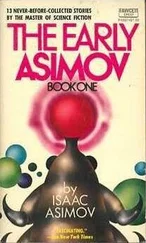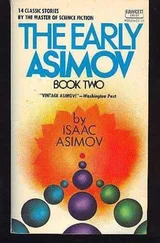Isaac Asimov - Asimov’s Guide To Shakespear. Volume 1
Здесь есть возможность читать онлайн «Isaac Asimov - Asimov’s Guide To Shakespear. Volume 1» весь текст электронной книги совершенно бесплатно (целиком полную версию без сокращений). В некоторых случаях можно слушать аудио, скачать через торрент в формате fb2 и присутствует краткое содержание. Жанр: Культурология, на английском языке. Описание произведения, (предисловие) а так же отзывы посетителей доступны на портале библиотеки ЛибКат.
- Название:Asimov’s Guide To Shakespear. Volume 1
- Автор:
- Жанр:
- Год:неизвестен
- ISBN:нет данных
- Рейтинг книги:4 / 5. Голосов: 1
-
Избранное:Добавить в избранное
- Отзывы:
-
Ваша оценка:
- 80
- 1
- 2
- 3
- 4
- 5
Asimov’s Guide To Shakespear. Volume 1: краткое содержание, описание и аннотация
Предлагаем к чтению аннотацию, описание, краткое содержание или предисловие (зависит от того, что написал сам автор книги «Asimov’s Guide To Shakespear. Volume 1»). Если вы не нашли необходимую информацию о книге — напишите в комментариях, мы постараемся отыскать её.
Asimov’s Guide To Shakespear. Volume 1 — читать онлайн бесплатно полную книгу (весь текст) целиком
Ниже представлен текст книги, разбитый по страницам. Система сохранения места последней прочитанной страницы, позволяет с удобством читать онлайн бесплатно книгу «Asimov’s Guide To Shakespear. Volume 1», без необходимости каждый раз заново искать на чём Вы остановились. Поставьте закладку, и сможете в любой момент перейти на страницу, на которой закончили чтение.
Интервал:
Закладка:
Homer tells the tale of but a single episode in the long Trojan War which, according to legend, lasted ten years. The episode takes place in the tenth and last year and deals with a quarrel between two of the Greek leaders, with the near disaster that befalls the Greek cause as a result, and with the dramatic reconciliation that follows after all the participants have suffered tragic losses.
In the course of the epic, hints are given as to events that took place before the incident of the quarrel and of events that were to take place after the reconciliation. The popularity of Homer's tale led later Greek poets and dramatists to try their hand at telling other portions of the tale based on Homer's references and on other legends then extant but no surviving today.
Other ancient writers even tried retelling the tale of the quarrel itself in their own way, and the habit of doing so continued through the Middle Ages and into modern times. In 1925, for instance, the American write:
John Erskine published The Private Life of Helen of Troy, putting the tale of Troy into twentieth-century idiom.
Shakespeare tried his hand at it too, producing, alas, a play that is not considered one of his better productions and is by no means worthy of the grand original.
In Troy …
Shakespeare chooses to tell (more or less) the same incident that concerns Homer, which means that he too must concentrate on the final stages of a long siege. Where Homer was dealing with incidents in a war which (in his time) must have been well known to all Greeks, with its heroes' names being household words, Shakespeare was not quite in the same position.
Educated Englishmen in Shakespeare's time knew of the Trojan War, but chiefly through writings on the subject in Roman and medieval times. It was only toward the end of the sixteenth century that Homer's poem itself was translated into English by George Chapman (whose work inspired a famous sonnet by John Keats two centuries later). At the time Troilus and Cressida was being written, only a third of that translation had yet appeared, so it is doubtful how much firsthand knowledge of Homer's actual tale Shakespeare himself had and how much he had to depend on later (and distorted) versions of the Troy tale.
Shakespeare did not apparently feel safe in starting, as Homer did, toward the end of the war, and inserts a somewhat apologetic Prologue to set the stage. The Prologue begins directly:
In Troy there lies the scene.
—Prologue, line 1
The name of the walled city which endured the long siege was, apparently, Ilion (or Ilium, in the Latin spelling). Homer's poem is therefore called the Iliad. The region in which Ilium was located was known as Troas or the Troad, and from this, the city took the alternate name of Troia. It is the English form of this latter name, Troy, that is most familiar to us.
It is over three thousand years now since Troy was destroyed and yet, thanks to Homer, its name remains forever fresh to us.
Indeed, it remained fresh and alive through a period in early modern times when skeptical scholars considered the Trojan War to have been purely mythical and were sure that no city of Troy had ever existed. Considering that Homer filled his tale with gods, goddesses, monsters, and wonders, it was easy to feel skepticism.
However, after all the overlay of the marvellous has been scraped away, a core remains and, as it turns out, that core has value.
A German businessman, Heinrich Schliemann, who implicitly believed the essential truth of the Iliad (minus its gods), amassed wealth and in the late nineteenth century used it to go to Greece and Turkey, where he hoped to dig up the ruins of Troy and some of the great Greek cities of the time. From the 1860s to his death in 1890, he achieved phenomenal success, locating the site of Troy and other places mentioned in the Iliad.
Historians now know quite a bit about the early phase of Greek history, which they call the Mycenaean Age. From what they have learned, we find that Homer's tale is a surprisingly faithful rendering (though with a few anachronisms) of Mycenaean society. Historians are now just as certain that there was a siege of Troy, as a century ago they were certain there was not.
… isles of Greece The Prologue goes on to describe those who were attacking Troy:
From isles of Greece
The princes orgulous, their high blood chafed,
Have to the port of Athens sent their ships,
—Prologue, lines 1-3
According to the legend, it was a combined expedition of Greek forces drawn from all the petty kingdoms that were then to be found in Greece. In theory, all acknowledged an overlord who ruled in the southern portion of the peninsula and it was this overlord who acted as commander in chief of the expedition.
The overlordship was not tight, however, and the leaders of the various contingents were very aware of their own rights and privileges. There was a strong resemblance between the situation in Mycenaean Greece and that in medieval Europe, where a king was titular overlord but could only with the greatest difficulty induce his various dukes and counts to obey him. Shakespeare was not so far removed from this stage of history to fail to understand it, hence his reference to the princes "orgulous"; that is, "haughty."
The Greek forces, coming from various regions, had to meet at some gathering place to form a unified fleet. According to legend, that meeting place was at Aulis, a harbor in Boeotia, protected by the long island of Euboea (see page I-59).
Shakespeare here makes the gathering place Athens, which is incorrect
… toward Phrygia
Having gathered, the united fleet now moves on across the Aegean Sea toward Troy. The total number of ships is given:
… Sixty and nine, that wore
Their crownets regal, from th'Athenian bay
Put forth toward Phrygia;
—Prologue, lines 5-7
In Mycenaean times, a people we now call the Phrygians were in control of western Asia Minor. They still dominated the area in the supposed time in which Homer lived, three and a half centuries after the Trojan War, so he could speak of them familiarly. Their power was not destroyed till about 700 b.c. when the nomadic Cimmerians from the regions north of the Black Sea invaded Asia Minor and wreaked widespread destruction. The name "Phrygia" was still applied to a region of west central Asia Minor throughout ancient times, however.
The chances are that the Trojans (although pictured in the Iliad as being in no way different from the Greeks in language, customs, or religion) were Phrygians.
Shakespeare's mention of 69 ships is an extremely modest underestimate of the legendary number. The Iliad lists the numbers of ships brought by each Greek contingent in Book Two and the total comes to 1186. Christopher Marlowe in his play Dr. Faustus is closer to Homer, by far, when he has Faustus cry out at seeing the shade of the beautiful woman who, according to legend, brought on the war, "Was this the face that launched a thousand ships-"
The ravished Helen. ..
The basic cause of the expedition was undoubtedly most unromantic. Troy controlled the narrow waters between the Aegean Sea and the Black Sea and was, therefore, master of an important trade route. By charging tolls for passage, they grew rich, and this made the city a valuable prize for any freebooting expedition.
Not only did Troy's wealth form a tempting target, but the Mycenaeans were being prodded from behind. New tribes of Greeks from the north, relatively uncivilized ones called Dorians, were making their pressure felt. Conditions at home were less settled than they had been and the urge to take part in piratical expeditions overseas increased.
Читать дальшеИнтервал:
Закладка:
Похожие книги на «Asimov’s Guide To Shakespear. Volume 1»
Представляем Вашему вниманию похожие книги на «Asimov’s Guide To Shakespear. Volume 1» списком для выбора. Мы отобрали схожую по названию и смыслу литературу в надежде предоставить читателям больше вариантов отыскать новые, интересные, ещё непрочитанные произведения.
Обсуждение, отзывы о книге «Asimov’s Guide To Shakespear. Volume 1» и просто собственные мнения читателей. Оставьте ваши комментарии, напишите, что Вы думаете о произведении, его смысле или главных героях. Укажите что конкретно понравилось, а что нет, и почему Вы так считаете.







